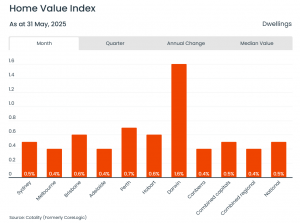
Miss enough mortgage payments and your lender might take your house. That’s mortgage default, and it can wreck your credit score and financial future. But before you start panicking about foreclosure, you should know that it’s preventable with a few smart moves. Let’s look at what mortgage default really means and the simple steps to make sure it never happens to you.
For informational purposes only. Always consult with a licensed mortgage or home loan professional before proceeding with any action.
Save This Quick Checklist
If you’re worried about missing mortgage payments:
- Call your lender right away—don’t wait
- Look at your budget and cut non-essentials
- Check if refinancing could lower your payments
- Ask about applicable assistance programs—many exist to help
- When possible, build an emergency fund for future protection
What Is a Mortgage Default?
Simply put, mortgage default is when you fail to uphold your mortgage agreement. The most common type of mortgage default is late payments.
Missing your mortgage payment by 90 days puts you in default, but there are plenty of steps before reaching that point. That said, once financial problems start, they can get worse fast.
Most lenders give you a 10- to 15-day grace period after your due date before charging late fees. But after 30 days, they report the late payment to credit bureaus. From there, your loan becomes “delinquent,” and left unchecked, it can ultimately lead to foreclosure, where the bank takes your house.
Defaulting on your mortgage can also tank your credit score by at least 100 points. That makes getting any future loans much harder for years to come.
The best move? Proactively call your lender at the first sign of trouble. Don’t wait until you’ve missed a payment. Many lenders have programs to help if you reach out early.
Common Causes of Mortgage Default
Knowing what causes homeowners to default makes it easier to spot the warning signs early.
Life Problems and Stress
Life can throw some nasty curveballs that make paying your mortgage tough.
Major life changes hit your finances hard. Divorce splits your household income, but doesn’t split your mortgage payment. Job loss cuts off your income suddenly. Serious illness can keep you from working while piling on medical bills.
Another common cause of defaulting, a death in the household, creates both emotional and financial strain. Unexpected big expenses like major home repairs can also drain your savings fast.
Stay ahead of these problems by knowing your options before a crisis hits. This helps you act fast when trouble comes.
Rising Rates on Adjustable Mortgages

If you have an adjustable-rate mortgage (ARM), watch out when interest rates climb. Your monthly payment can jump a lot when your rate adjusts.
Some payment plans only cover interest at first. This means your loan balance grows instead of shrinks—a particularly bleak problem called negative amortization.
In Canada, high household debt makes this worse. With living costs rising, even small payment increases hurt when you’re on a tight budget.
To stay safe, know when your ARM will adjust. Talk to your lender about refinancing options before rates change. This keeps you in control of your payments.
Not knowing how your mortgage terms will affect you is a major mortgage mistake.
Borrowing Too Much
Applying for a loan bigger than you can handle leads to payment problems down the road.
This happens when you don’t plan for future expenses or changing interest rates. An adjustable mortgage that seems affordable now might not be when the variable rates go up at renewal time.
High debt makes everything worse by adding more monthly bills. Then life events—like job loss, a birth or death, or surprise expenses—can tip you over the edge.
To avoid this trap, make a realistic budget before house hunting. Find out how much house you can afford and don’t pay over that, even if you qualify to borrow more.
Don’t let anyone push you into a bigger loan than feels comfortable. Leave room in your budget for life’s surprises.
What Happens When You Default
Missing mortgage payments creates big problems that can last for years.
After 30+ days of missed payments, lenders charge late fees and report you to credit bureaus. Your credit score will take a huge hit, making qualifying for new loans much harder.
Keep missing payments for the next couple of months, and you’ll get a default notice. If you still don’t pay what you owe, foreclosure can typically start within six months.
Instead of foreclosure, some provinces use what’s known as “power of sale.” It’s a faster process, and if your home ends up selling for less than you owe, your lender might pursue your remaining loan balance. This makes your financial problems even worse.
The stress affects your mental health, too. Finding new housing gets harder with damaged credit, and rebuilding takes years.
Remember: CMHC mortgage insurance doesn’t protect YOU when you default—it’s there to protect the LENDER. You’ll need to purchase additional insurance if you want to be covered in the event of job loss or similar.
Smart Ways to Prevent Default
Here are practical steps to keep your mortgage in good standing.
Make a Budget That Works
A good budget keeps you from missing mortgage payments.
First, write down all the money coming in and going out each month. This shows where you can cut costs to focus on your mortgage.
Watch your finances closely to spot problems before they hit. Pay attention to rate changes or rising expenses.
Start an emergency fund covering three to six months of mortgage payments. This safety net helps when unexpected expenses pop up.
Talk to Your Lender Early

Don’t wait until you miss a payment to call your lender.
Contact them as soon as you see financial trouble ahead. Whether it’s job loss or medical bills, let them know what’s happening before your emergency fund runs out.
Early contact opens doors to helpful options like loan changes or temporary payment breaks. By reaching out first, you show you’re serious about fixing the problem.
Lenders have more flexibility to help before you miss payments. Many have special mortgage relief programs for temporary hardship. Ask what’s available for your situation.
Remember: your lender doesn’t want you to default. Foreclosure is a lengthy, expensive process, and there’s no guarantee that they can sell your home for enough to recoup their losses. They may be more willing to compromise than you think.
Change Your Loan Terms
Refinancing or restructuring your mortgage can make payments more manageable, but should you?
Refinancing means getting a new loan with better terms. A lower interest rate or longer loan term can cut your monthly payment.
Restructuring is a form of loan modification—it changes your current loan. You might extend how long you have to pay, which lowers each month’s payment amount. You might also lower your interest rate, or even reduce what you owe outright in some cases.
Loan modifications are generally a loss mitigation option when a borrower experiences financial hardship. Modifications can lower your credit score, while refinancing typically doesn’t.
Talk to your lender about these options before missing payments. Acting early gives you more choices—and likely better terms.
Look for Help Programs
Many mortgage relief programs exist to help homeowners avoid default.
Financial institutions sometimes waive late fees or extend payment terms during tough times. Some offer temporary payment reductions, while others may allow you to make interest-only payments for a particular timeframe.
Mortgage reinstatement programs are another way to potentially catch up on your missed payments.
Some common mortgage relief options to ask about:
- Mortgage payment deferral (delays payments, usually up to four months)
- Skip a payment (a.k.a. payment pause, miss a payment, take a break)
- Extension of amortization (longer repayment term, but you’ll pay more in interest—think carefully before you change your amortization period)
- Capitalization (late payments get added to your mortgage principal)
- Interest-only payments (may be an option if you’ve used other options already)
- Repayment plan (the lender adds missed payment money to your monthly payments until you’re up-to-date)
Ask a licensed financial counsellor about options that fit your specific situation.
For informational purposes only. Always consult with a licensed mortgage or home loan professional before proceeding with any action.
Take a Proactive Stance
Don’t let a mortgage default take your house and wreck your credit. Stay ahead of problems by talking to your lender early, making a tight budget, and building emergency savings.
Look into refinancing when it makes sense, and don’t be afraid to ask for help from mortgage assistance programs. Taking action early keeps small problems from turning into foreclosure.
Your future self will thank you.





